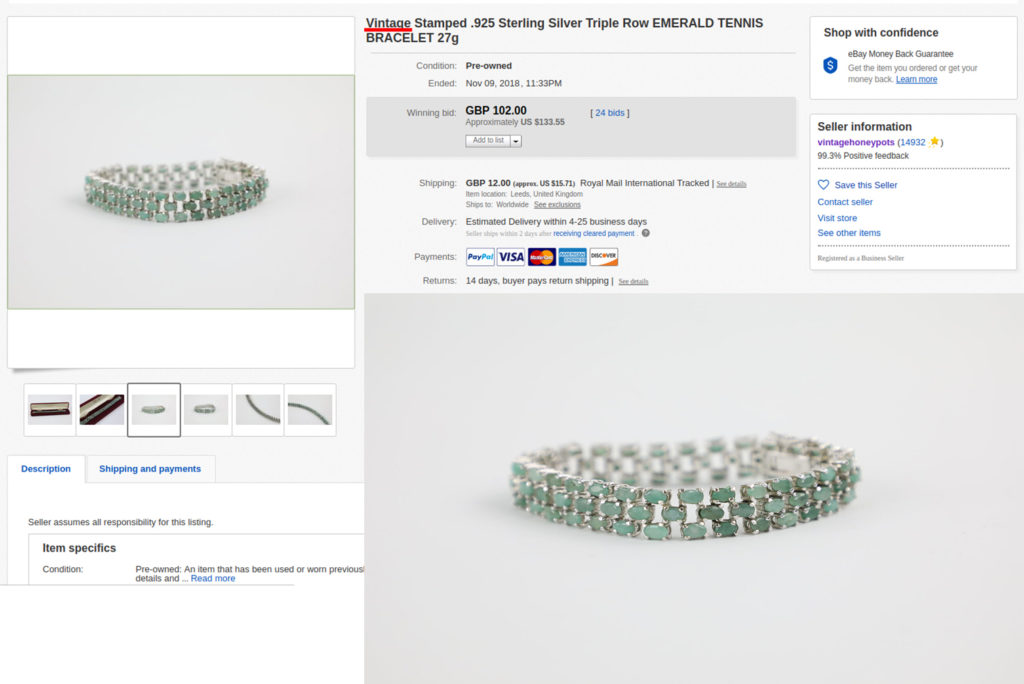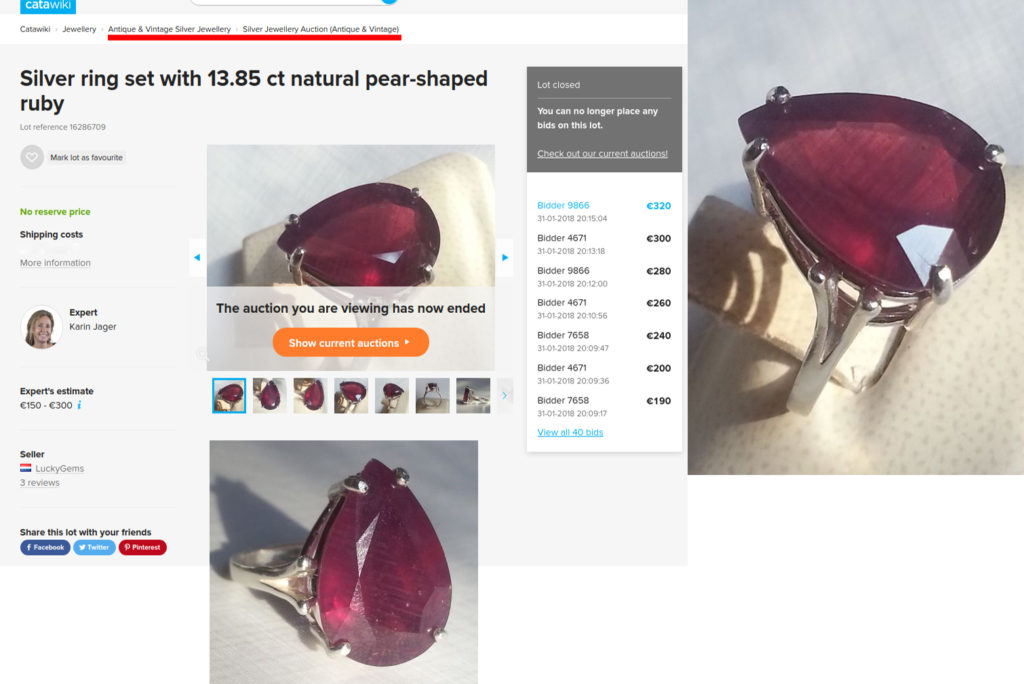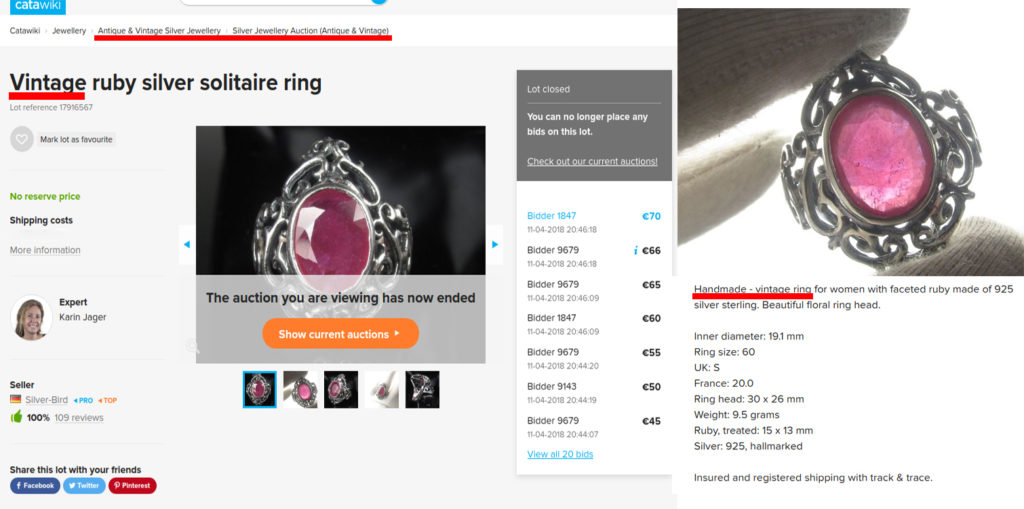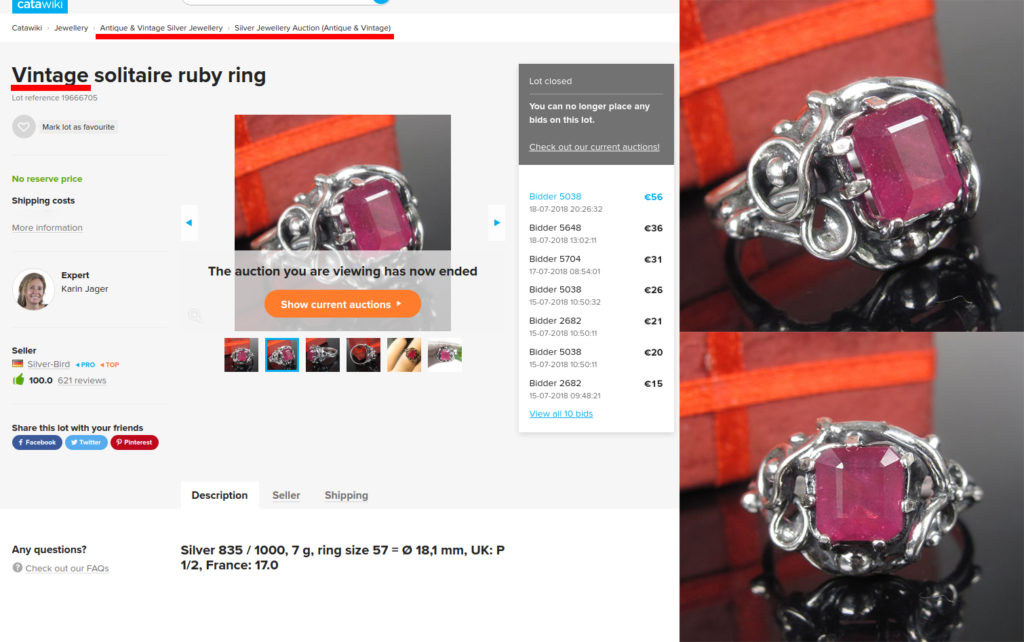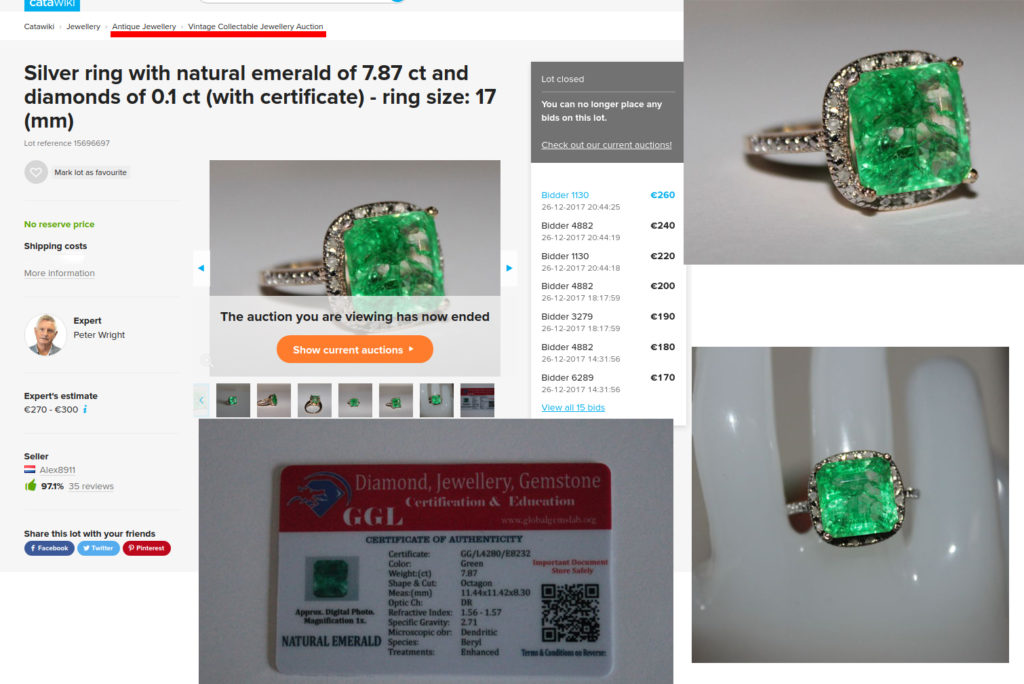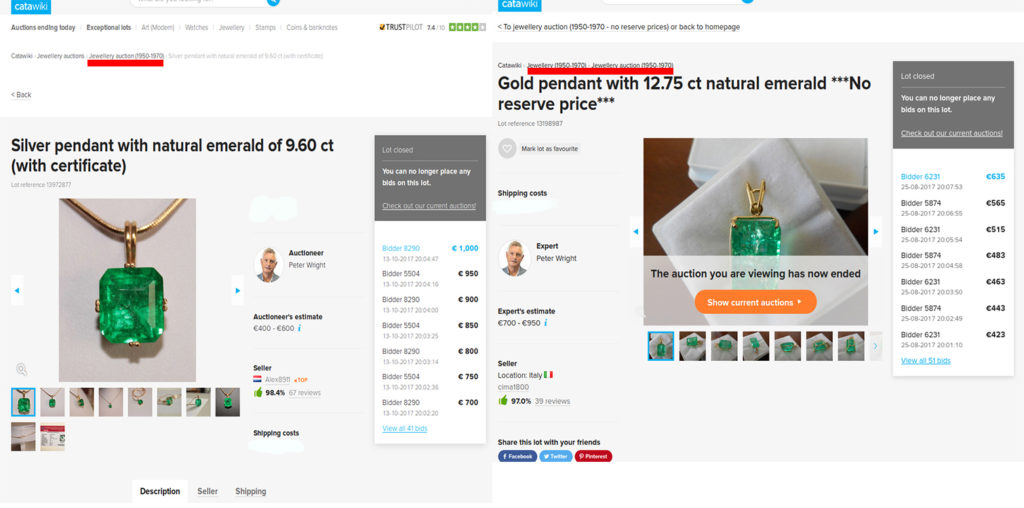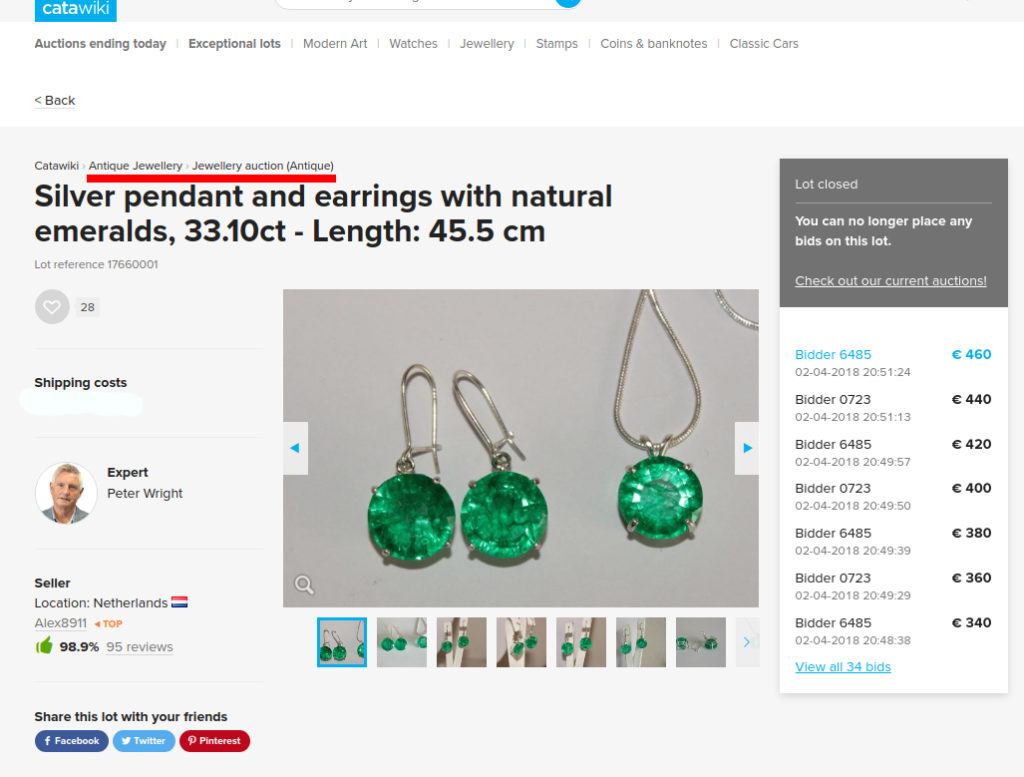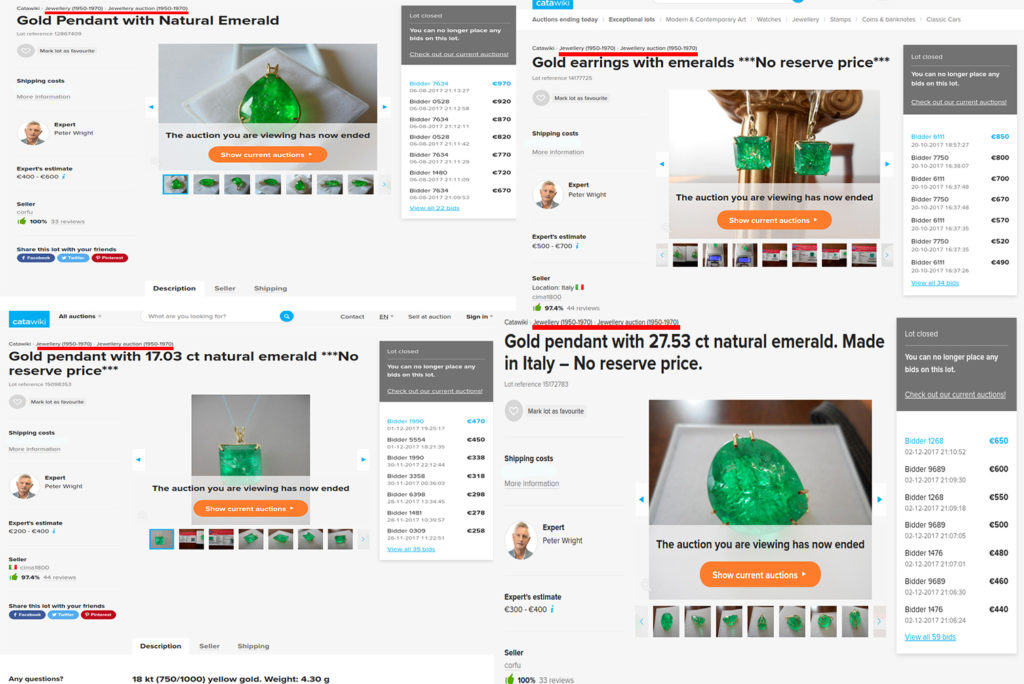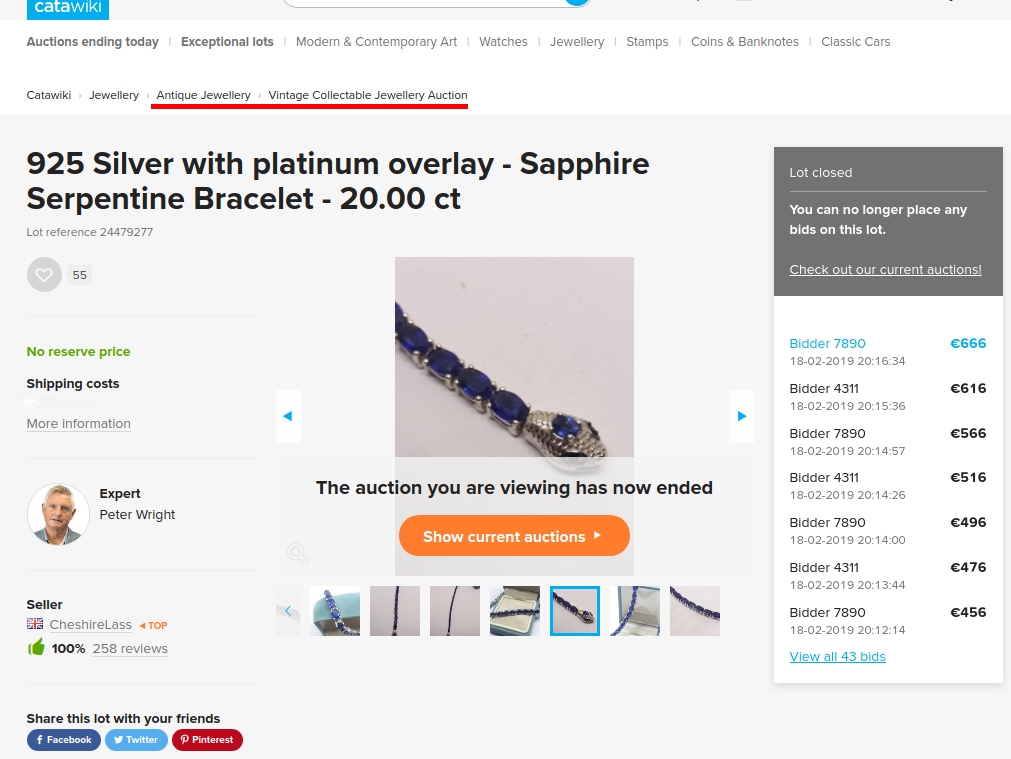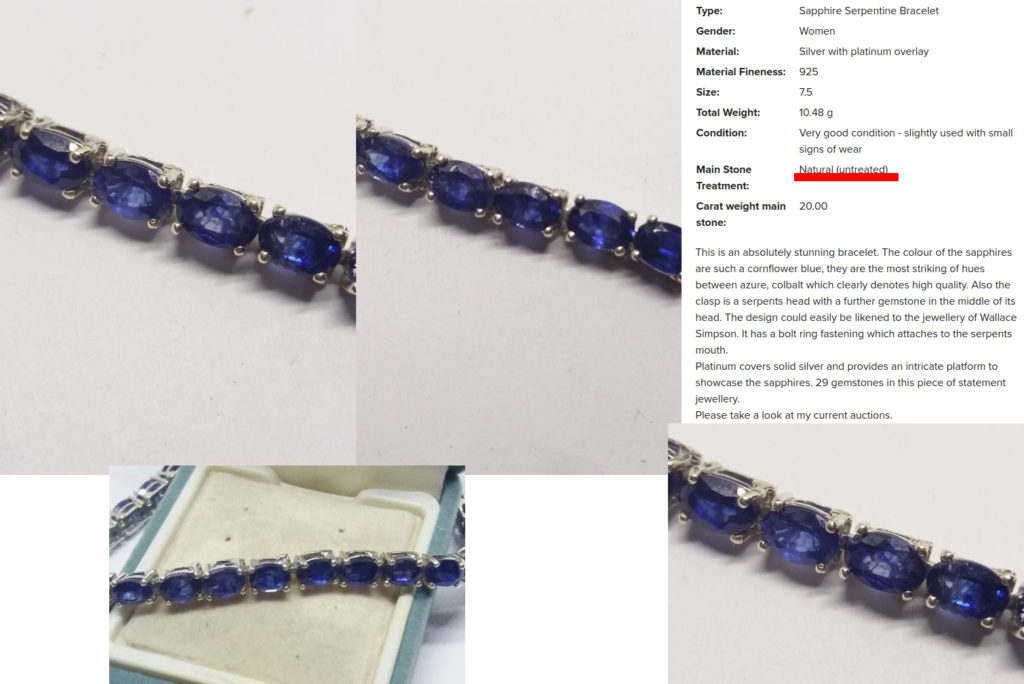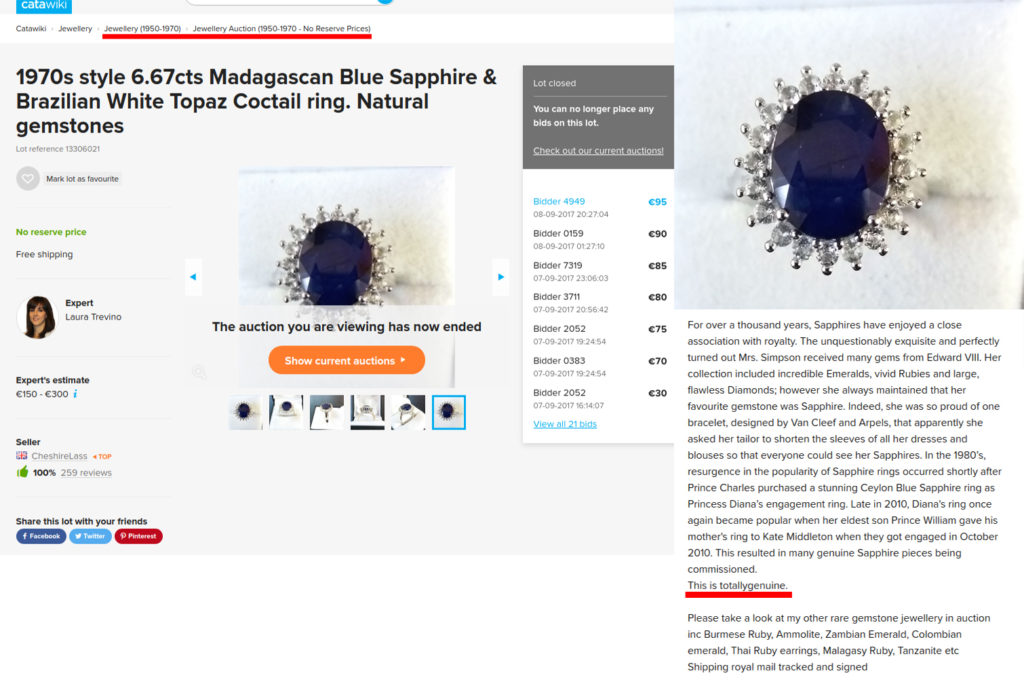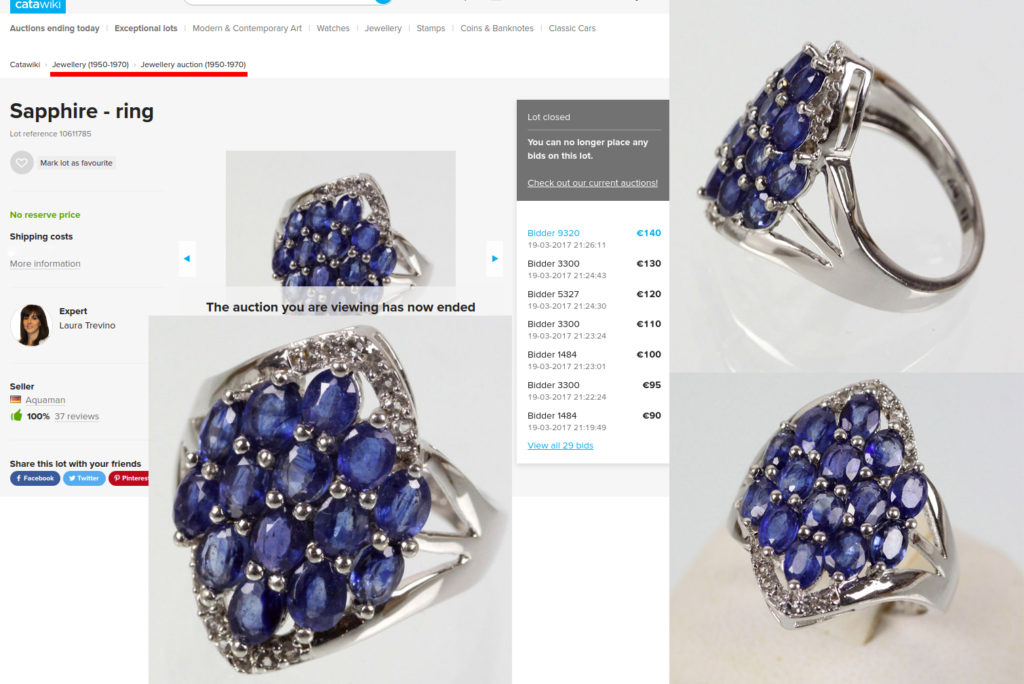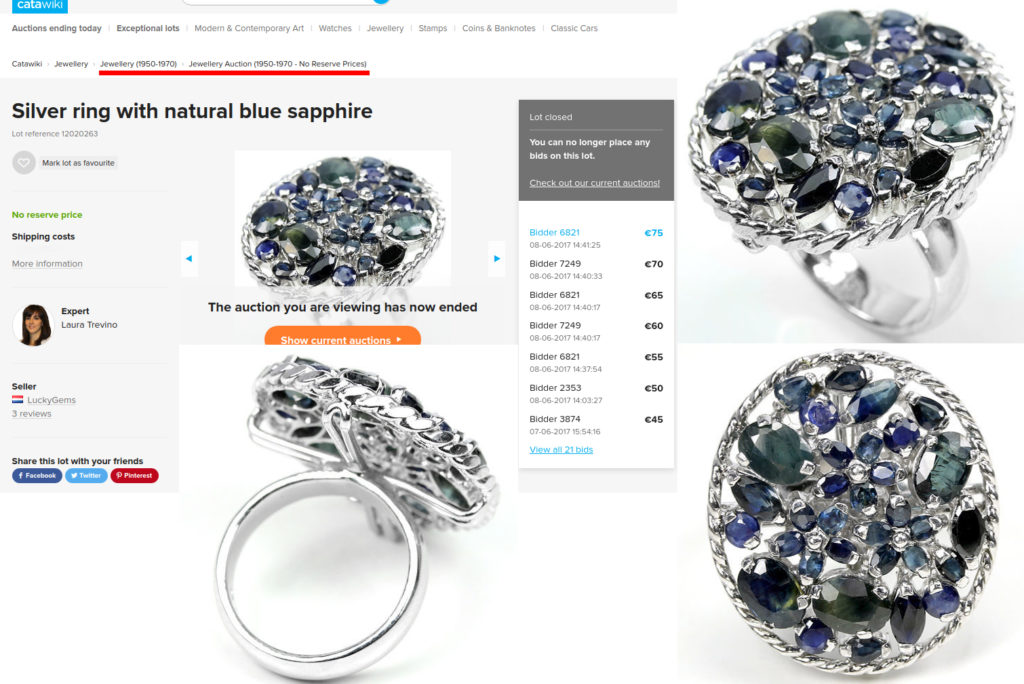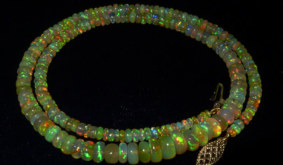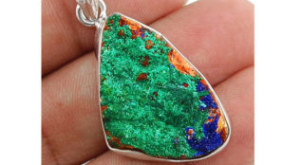Vintage jewelry is becoming increasingly popular. Actually, it is so popular that some buyers are ready to pay more (sometimes even substantially more) for a piece of vintage jewelry than for a similar piece of contemporary jewelry. This may seem somewhat illogical, taking into account the fact that contemporary jewelry is new and unworn, whereas vintage jewelry is used, with visible signs of wear oftentimes.
Why would anyone prefer a piece of used jewelry over a brand new, unworn jewelry? Is it purely a matter of sentiment, kind of the grass was greener and the sun was shining brighter back then thing? Or is it because people believe that the quality of the jewelry was substantially better 30 or 40 years ago?
Could it be that they are much more sophisticated and are aware that many of the most violent, and oftentimes undisclosed, gemstone treatment methods (like lead glass-filling, for instance) have been invented within the last few decades?
The reasons for such a choice can be multiple, ranging from pure sentiment to a well-weighted decision. Nevertheless, one should be clear: if a buyer has decided to buy a piece of vintage jewelry, he should get a piece of vintage jewelry. Not “vintage” jewelry that was made yesterday.
I decided to do some research on whether what is claimed to be vintage and antique jewelry actually is vintage and antique.
The results turned out to be shocking. My miniature research resulted in an impressive collection of incredible examples of lack of professionalism and deceptive practices. Let’s have a look at these examples on a case by case basis.
And remember, if you are unsure whether the piece of jewelry you are interested in is indeed vintage or antique, ask the Community!
“Art Nouveau Pendant” Made in Thailand in 2018
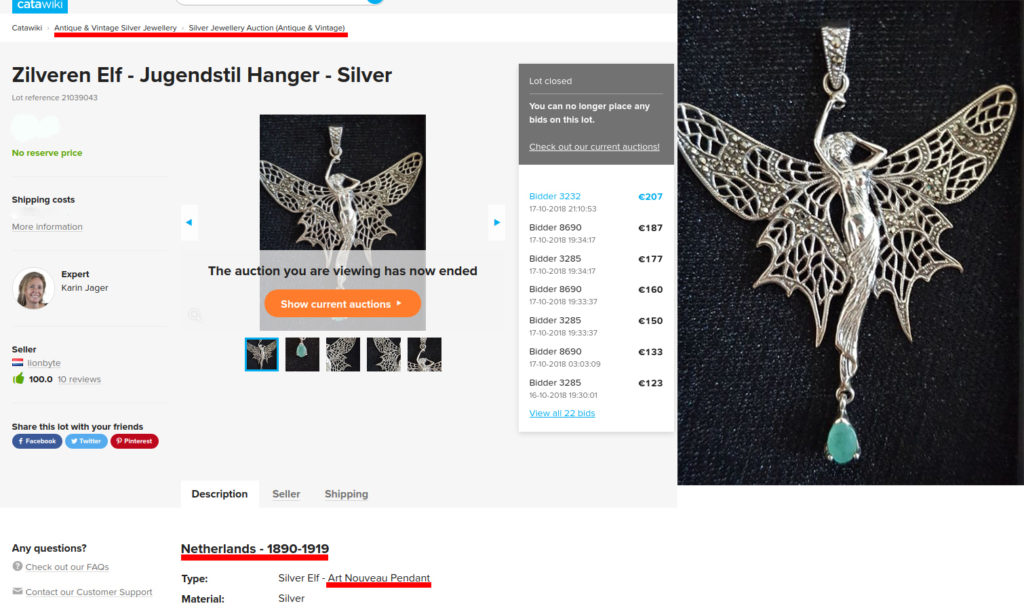
Figure 1: A Sterling silver elf pendant with marcasite & emerald sold as Art Nouveau jewelry; Catawiki auction
This is one of my favorites. I am not sure which part I like the best – the fact that the auction’s so-called expert has placed this item in a totally wrong category: Antique and vintage silver jewelry, or that the seller claims this is an Art Nouveau pendant made in the Netherlands between 1890 and 1919.
Everything is absolutely wrong here: this is not an Art Nouveau pendant, and it has not been manufactured in the Netherlands.
Instead, this is a contemporary piece of jewelry made in Thailand in the 21st century, and it has been available online at a price of $20 – $25 for years. So, the “lucky” buyer, who intended to by an Art Nouveau pendant, ended up paying EUR 207 + 9% auction fee for a piece of contemporary Thai-made jewelry worth $20. I have bought and sold tens of these pendants.
They are indeed very nice, no question about that. However, they are not Art Nouveau, have nothing to do with the Netherlands, and are definitely not worth 200+ euro.
This is another example of a contemporary piece of Thai-made jewelry being sold as vintage. This is an absolutely great and professional seller. I have bought from this seller, too.
Nevertheless, this bracelet is not vintage. Normally, it would cost about half of the price the buyer paid here (for a brand new, unworn bracelet as opposed to the pre-owned, worn item here).
Can Jewelry with Composite Rubies be Vintage or Antique?
Here we have a sterling silver ring that has been auctioned off for EUR 320 + 9% auction fee. It was sold in the Antique & Vintage category. So, one can logically presume that the buyer intended to: a) buy either an antique or vintage piece of jewelry; b) buy a ring with a genuine ruby (the listing’s description claims this is a “Stylish ring with 100% genuine ruby”). Sadly, the buyer gets none of these.
First of all, this is a lead glass-filled ruby, also known as a composite ruby, and it costs next to nothing (read more about composite rubies and their true value here). Secondly, lead glass-filled rubies first appeared on the market in 2004. Apparently, it makes it impossible for this ring to be antique or even vintage.
As a result, the buyer has wasted almost EUR 350 on a composite ruby worth around $20 – $30 and a silver setting (worth another $5 – $10). The expert’s estimate clearly indicates that she understood that this is not a “ring with 100% genuine ruby”. So, if she knew that this is a lead glass-filled ruby, why would she let the seller state it is a “natural ruby” and “100% genuine ruby”?
In addition, an expert should be aware that the presence of a composite ruby automatically means that this piece of jewelry can be neither antique nor vintage.
Here is another sterling silver ring with a lead glass-filled ruby sold as a piece of vintage jewelry. For those of you who want to find out more about how to identify composite rubies read this post.
This ring is really interesting since it has an antique or vintage appearance. The composite ruby, however, reveals the truth and makes it clear that it has been made after 2004.
A different category: Jewelry 1950 – 1970. A different expert. The same story.
Fake Emeralds in “Vintage” and “Antique” Jewelry
These fake emeralds, many of them with the GGL certificates, appeared in the market approximately ten years ago. Obviously, this item cannot be and is not vintage.
The expert’s estimate clearly indicates that he was aware that this is not a real emerald, as real emeralds cost much more than this. Yet, he lets the seller claim it is a “natural emerald” and sells this ring in the Vintage collectible jewelry auction.
This ring is neither vintage nor collectible. The buyer intended to buy a piece of vintage jewelry with a real emerald but got a cheap fake. You can read the whole story about these fake emeralds here.
Here we have two contemporary pendants that were sold as vintage jewelry in the Jewelry 1950 – 1970 category. Note the price that the buyers paid for these items! Fake emeralds like these cost around $10 – $20 per piece.
The expert’s estimates are way too high for these fake, non-vintage items. Yet, they are way too low for natural emerald jewelry. So, it is perfectly reasonable to assume that the expert was well aware of what is going on here.
As a result of the expert’s unprofessional and unethical behavior, the poor buyer of the silver pendant paid EUR 1090 for a fake emerald worth $20 and a silver setting worth another $10. The buyer of the gold pendant is a little bit better off as he got at least a few grams of gold for his 700 euro. Still, a truly miserable deal.
33.1 carats of antique emerald jewelry would cost tens, if not hundreds, of thousands. Still, the expert sees no problem here and lets the seller claim these are “natural emeralds”. Just like he sees no problem in placing this contemporary set of fake emerald jewelry in the Antique jewelry auction. Another “lucky” buyer of “antique” jewelry.
Here again, the buyers have wasted over EUR 3000 on some junk (except for a few grams of gold). As said before, these fake emeralds appeared in the market approximately ten years ago. It means that under no circumstances this jewelry can be from the 1950s-1970s.
Pay attention to the discrepancies in the expert’s estimates: his estimate for the silver pendant with a 9.60-carat “emerald” in Figure 8 is higher than for the gold pendant with a 27.53-carat “emerald” in Figure 10. This alone should serve as a big red flag!
Cobalt-Doped Composite Sapphires in “Antique/ Vintage Jewelry” – Magic or Fraud?
Sapphires in this sapphire bracelet can be called cobalt-lead glass-filled sapphires, lead and cobalt glass filled sapphires, cobalt-doped glass-filled sapphires, or cobalt-doped composite sapphires (as GIA calls them).
No matter which name is used, the important fact is that these are composite sapphires that are extremely cheap and have serious durability problems (just like composite rubies). They appeared on the market in 2012 (eight years after lead glass-filled rubies). Inevitable conclusion: this bracelet is not vintage.
How can I be so sure that these are cobalt-lead glass-filled sapphires? Well, it is pretty simple: composite sapphires have very much the same visual characteristics and gemological properties that composite rubies do. Have a look at the close-up images (Figure 12 below).
According to the Gemological Institute of America (GIA), “Gemological properties include readily evident color concentrations in surface reaching fissures and cavities, innumerable spherical to flat contraction bubbles”. As fissures have been filled with a rich blue substance, there is a blue color concentration where cobalt-lead glass has been infilled.
This is where the characteristic darker color lines and uneven color distribution come from. Said characteristics are especially well visible in the upper-left corner image. These gemological properties are so striking that there is no doubt that these are cobalt-doped composite sapphires.
Consequently, there is no doubt that this bracelet was made after 2012.
The seller, however, shamelessly claims these sapphires not only are natural but even untreated (that would make them very valuable). The expert, obviously, has no problem with this apparently false claim. Just like he feels perfectly comfortable to state that this bracelet is a piece of vintage, collectible jewelry. It is neither vintage nor collectible.
As a matter of fact, I have seen these bracelets before. They have been readily available online for years, manufactured in Thailand, and their average price used to be $50 – $80. Here, as you can see, the buyer paid EUR 726 (the winning bid + 9% auction fee) and received a piece of jewelry that is not vintage, not collectible, and is worth a fraction of the price paid.
A different category: Jewelry 1950 – 1970. A different expert. Yet, the same story. The expert’s estimate clearly indicates that she knew that this was a composite sapphire. Nevertheless, the seller is given the green light to falsely claim it is totally genuine and vintage.
Pay attention to all the bragging about “sapphires association with royalty”, Mrs. Simpson and Edward VIII, Van Cleef and Arpels, Prince Charles and Princess Diana, Prince William and Kate Middleton. It’s so ugly when such a myriad of high-profile names is used by a person selling you composite sapphire jewelry as the real thing…
Here is another piece of contemporary, Thai-made jewelry with cobalt-doped composite sapphires. Even if you missed the typical visual characteristics of a composite sapphire here, the shiny appearance of a brand new, unused jewelry cannot go unnoticed. This ring costs around $25 – $35, and it is readily available online.
Yet another contemporary, Thai-made ring that is readily available online for $25 – $35.
Have you ever bought a piece of vintage or antique jewelry? What was your experience? Please share it in the comments section.
